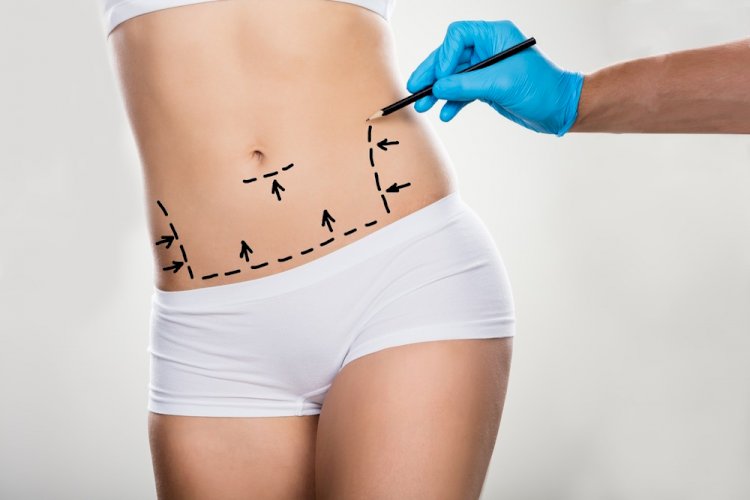Abdominoplasty

a plastic abdominal operation that will help you regain a slender silhouette. It is a method applied to the remove of abdominal skin sagging with regional and unwanted fat tissue in abdomen and belly area. Especially pregnancies and losing weight cause strias and the dangling of abdominal skin. The herniation due to the looseness of the abdominal fascia, which is called diastasis & rectus diastasis and is the main barrier in the anterior abdominal wall due to weight gain and gestation, is corrected by “tummy tuck” surgery. Quite often, abdominoplasty is performed in combination with liposuction (the area of the sides, waist, abdomen). The operation can be carried out both for women and for men.
when and how to operate?
Tummy tuck is not a method of losing weight, but a way of correcting a figure. Abdominoplasty can be divided into several categories: mini abdominoplasty, when only a small skin fold is removed; abdominoplasty of medium scale and abdominoplasty of a large scale associated with the stitching of the abdominal muscles. Whether you will get abdominoplasty or not – the surgeon decides during the consultation. A small bulge of the abdomen and minor fat deposits, are not indications for carrying out this operation. These shortcomings can be removed by physical exercises, exercise or liposuction.
Abdominoplasty is performed in the area where previous cesarean section is allowed with general anesthesia. During the operation, fat and skin excesses are removed and the looseness in the structure, which is called “abdominal fascia” between the abdominal muscles and serves as a kind of inner corset, is repaired.
How is the operation done?
Abdominoplasty is performed under general anesthesia. The duration of the operation is from 1.5 to 3 hours, depending on its scale. The surgeon makes a transverse incision above the pubic region, from one hip to the other (depending on the excess skin). The cut has an arcuate shape resembling a smile. After that, the abdominal wall of muscles separates the skin and subcutaneous fat. As a rule, after birth and pregnancy, the abdominal muscles are stretched. During the operation, the surgeon will strengthen them and perform their connection. After that, excess skin is stretched. If necessary, then liposuction is performed. Then the navel is formed in a new place. Wounds are applied to the wounds. The surgical wound is sewn gradually, along layers. The wound is covered with a sterile bandage.
Your general health condition, abdomen, waist and other areas of fat and distribution of fat, puffiness and excess skin of the abdomen and skin quality is determined. During this examination; You should provide accurate and detailed information about your illnesses, your current health problems (diabetes, etc.), your habits (especially smoking), and medications you use (aspirin, tranquilizers, etc.). Another thing you need to tell your doctor during this examination is the reason why you want this surgery and what you expect from this surgery.
The first operations on abdominoplasty were carried out at the end of the 19th century.
Abdominoplasty accounts for about 7% of all plastic surgeries.
Contraindications for abdominoplasty:
- presence of oncological diseases
- diabetes
- obesity
- poor blood coagulation
- pregnancy
- lactation